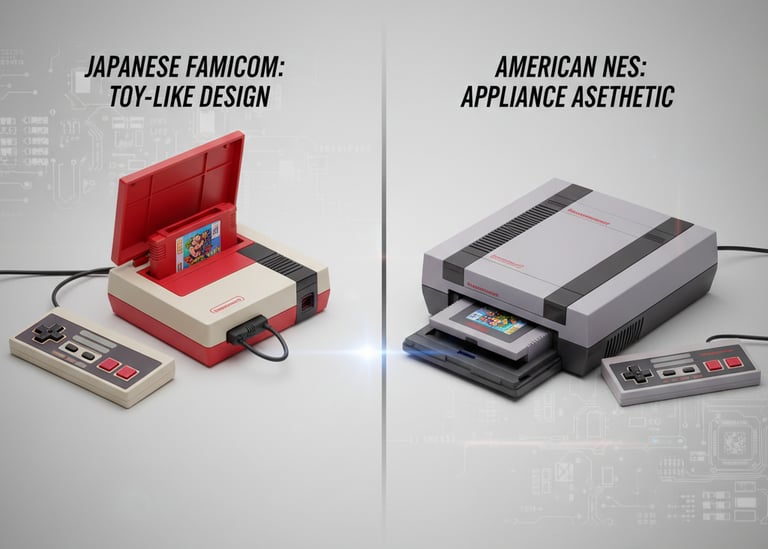From Famicom to NES: Nintendo’s Entertainment System Strategy
Discover the brilliant marketing strategy behind the Nintendo Entertainment System (NES). Facing a "dead" market after the 1983 crash, Nintendo avoided the term "video game" and rebranded the console as an "Entertainment System." Bruce Lowry reveals the secrets.
NEWS
Qasim
10/19/20253 min read


How Nintendo Revolutionized Gaming: The Untold Story Behind the NES Name and Its Impact on a Dying Industry
There was a time when the phrase “video game” carried a negative connotation in North America. It’s hard to imagine today — in an age where gaming dominates global entertainment — but in the early 1980s, those two words symbolized failure, risk, and financial loss. The gaming industry was in ruins after the infamous 1983 video game crash, and retailers wanted nothing to do with consoles or cartridges.
Yet, amid this bleak landscape, Nintendo dared to reimagine the industry from the ground up. Bruce Lowry, the former Vice President of Sales at Nintendo of America, recalls how even saying “video game console” was considered bad for marketing at the time. The solution? A new identity — one that distanced Nintendo from the term that had become toxic.
That’s how the Nintendo Entertainment System (NES) was born
From a Market Collapse to a Masterstroke in Marketing
In 1985, the gaming market in North America was declared dead. Stores had unsold stock piling up, companies like Atari were struggling, and the once-promising console market seemed doomed. No one believed there was a future for home gaming — no one except Nintendo.
The Japanese company had already launched the Family Computer (Famicom) in Japan in 1983, where it was met with huge success. However, bringing it to the U.S. presented a unique challenge. Retailers refused to stock anything labeled as a “video game.” Consumers had lost trust.
Lowry and his team knew that for Nintendo to stand a chance, they needed to rebrand the console in a way that made it feel fresh, innovative, and — most importantly — different from the products that had failed before.
So, the term “Nintendo Entertainment System” was born. It wasn’t just a “video game console.” It was an entertainment system — a piece of high-tech hardware that could be a fun, family-friendly addition to the living room, not just a toy for kids.
A Design Built for Trust and Appeal
According to Lowry, the original Famicom design was far from suitable for the American market. “It looked like a small white toy,” he said. “We knew it wouldn’t resonate with Western consumers.”
Nintendo’s design team went back to the drawing board. They transformed the playful, plastic Famicom into a more sleek, professional-looking device that resembled a VCR — a common household appliance at the time. This clever redesign gave the NES a sense of familiarity and credibility, making it easier to sell to skeptical retailers.
The final product — with its gray, boxy design and front-loading cartridge system — looked nothing like the Famicom, and that was exactly the point. It didn’t look like a “video game console.” It looked like an “entertainment machine.”
Nintendo’s Strategy: Sell Entertainment, Not Just Games
Nintendo didn’t stop with a new name and a sleek design. Lowry and his team doubled down on the “entertainment” concept by bundling the system with unique accessories and peripherals that made it feel futuristic.
One of those was R.O.B. the Robot (Robotic Operating Buddy), an innovative — if somewhat gimmicky — accessory designed to make the console stand out. While R.O.B. didn’t become a long-term success, it served its purpose: convincing retailers that the NES was something more than a traditional gaming system.
Then came the NES Zapper, the light gun that worked with games like Duck Hunt. This accessory became iconic, helping cement the NES as a versatile entertainment product.
By blending gaming with technology and creativity, Nintendo changed the conversation around home consoles. The company had effectively rebuilt the reputation of video games from scratch.
The Rise of a Global Icon
When the NES officially launched in North America, it didn’t just perform well — it redefined the entire industry. Consumers embraced it, retailers restocked their shelves, and suddenly the term “video game” was no longer taboo.
What started as a risky marketing experiment turned into one of the most successful entertainment products in history. The NES went on to sell over 60 million units worldwide, introducing legendary franchises like Super Mario Bros., The Legend of Zelda, and Metroid.
Bruce Lowry’s decision to rebrand the Famicom as the Nintendo Entertainment System didn’t just save Nintendo — it saved the gaming industry itself.
Legacy That Still Inspires Today
Looking back, it’s clear that Nintendo’s decision to focus on “entertainment” rather than “video games” was a visionary move. The NES didn’t just sell consoles; it rebuilt consumer trust and set the stage for modern gaming as we know it.
Today, every major console — from PlayStation to Xbox to the Nintendo Switch — owes part of its success to that pivotal shift in strategy from 1985. What was once a dead market became a multibillion-dollar global empire.
As Bruce Lowry reflected in his interview with Time Extension, it all started with one simple idea:
> “We weren’t selling games. We were selling entertainment.”
